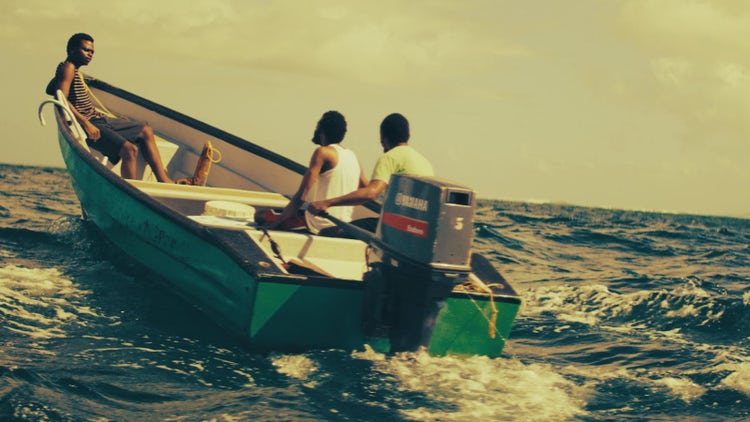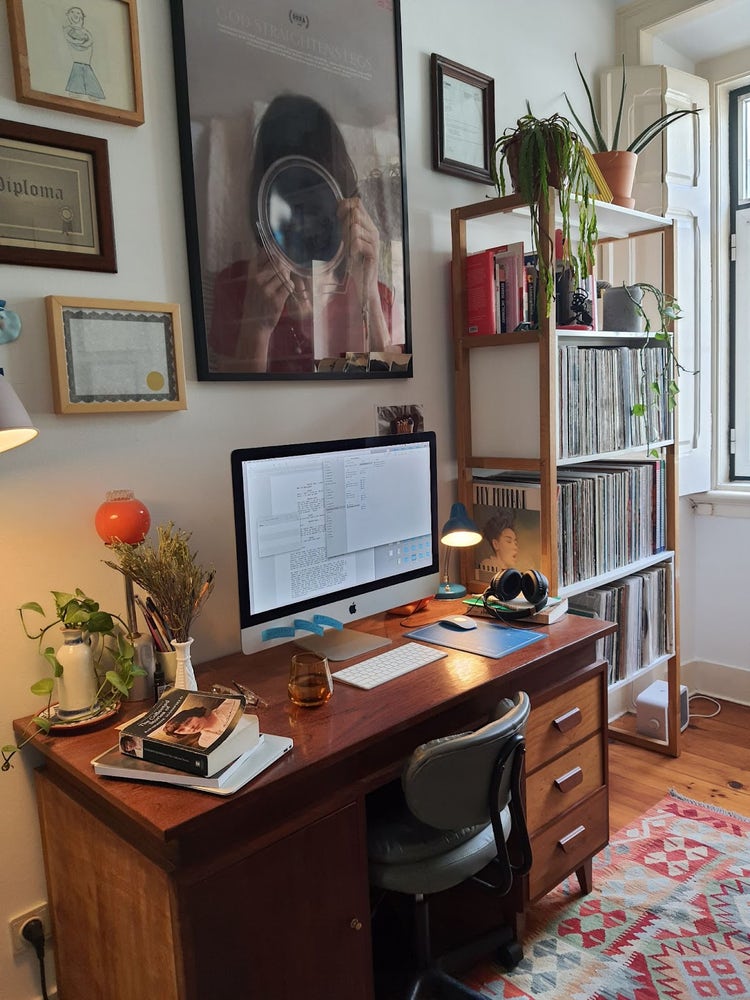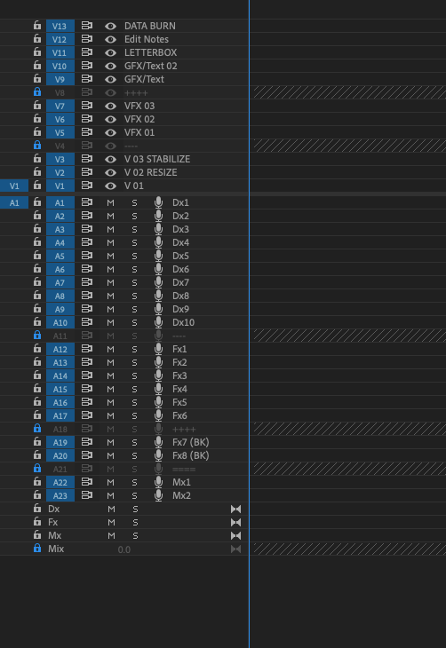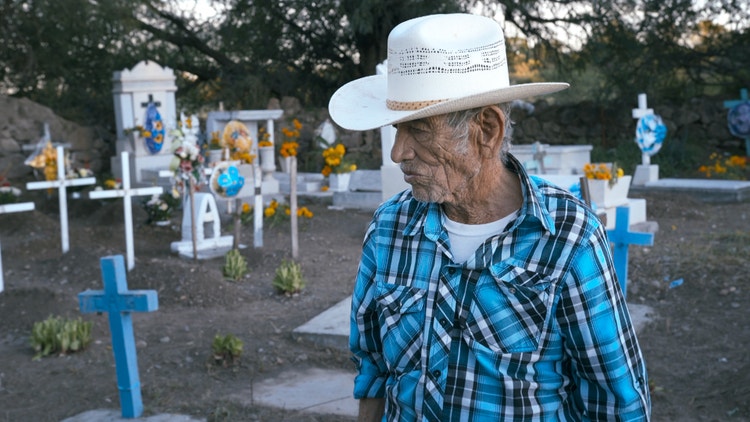An Outpouring of Creativity at SXSW 2022

Image source: fergregory , Adobe Stock.
Adobe is honored to celebrate filmmakers, title designers, poster designers, creators, and more at the 2022 SXSW Film Festival.
We would like to take this opportunity to spotlight some of the standout filmmakers and projects at the festival this year. We love to see the innovative and creative storytelling at SXSW and are thrilled that Adobe Creative Cloud continues to help empower creators with the tools they need to execute their vision. Thank you to the many creative professionals that chose tools like Premiere Pro, After Effects, Photoshop, Illustrator, and many more to help bring their stories to life.
Once again Adobe was a proud sponsor of the SXSW Film Awards, which includes the Adobe Editing Award, and the Film Design Awards, recognizing the best work in title design, poster design, and virtual cinema at the festival. Congratulations to Paul Rogers for taking home the Adobe Editing Award, honoring his exceptional work on A24’s Everything Everywhere All At Once using Premiere Pro and Frame.io.
We were excited to have the opportunity to speak to some of this year’s filmmakers who used tools like Premiere Pro, After Effects, Frame.io, Photoshop, Illustrator and more, to bring their films to life. Read on to learn how they got their start in show business, what their favorite workflow hacks are, and the best advice they can offer aspiring filmmakers and creatives:
Damian Marcano, Director of Chee$e

Image Source: SXSW.
How and where did you first learn to edit?
Working on music videos with Tiny at Auntie Petra’s house. We tried everything to make the crappy footage we had look better. Eventually I got so frustrated I came up with part of the process called “do something crazy.”
How do you begin a project/set up your workspace?
I can’t give the audience the best if my feelings are all out of place. So we have to get the vibes right first. Also get the right people around you. Someone in the room that’s a possible audience member. Their reactions are priceless.
What’s the toughest thing you’ve had to face in your career and how did you overcome it? What advice do you have for aspiring filmmakers or content creators?
Being from Morvant, Trinidad. It’s a community on the hill which has a stigma in the news regarding violence and crime. Most of us are looked down upon because of that. So I decided to name everything I do (writing, directing) after MOVA (the phonetic pronunciation of the word). Which has allowed me to redefine the feeling of the neighborhood when you hear it’s name. My advice: “Jump off of the cliff, don’t worry if there is water below — that is the power of art.”
What do you like about Premiere Pro, and/or any of the other tools you used?
The entire Adobe Creative Cloud allows me to just create. Being able to send things over to After Effects and fixing an audio clip in Audition is a life saver. Especially when you don’t have a large post facility to go to.
Who is your creative inspiration and why?
WIFE — She gave me the most important advice — ‘Be Damian’.
Joële Walinga, Director/Producer/Editor of Self-Portrait
What were some specific post-production challenges you faced that were unique to your project? How did you go about solving them?
A major challenge with editing this project was that the footage captured was all silent, so all of the audio had to be built up from scratch, first by me as I was editing it, and then professionally designed by my brilliant sound designer Ines Adriana. I learned that I love editing and designing sound! I only did a rough version in Premiere Pro as I was editing: basically every shot that I wanted to work with (even if I was just testing one out to see how it felt) had to first have layers of sound added, its aural world built. It took a long time but I loved every minute of it, and it let me see the possibilities of using sound as its own abstract storytelling force, in partnership with the footage but also as its own agent.
What do you like about Premiere Pro, and/or any of the other tools you used?
I like how intuitive Premiere Pro is! It’s like an extension of my brain that I can look at and move things around in.
Who is your creative inspiration and why?
For editing, I am inspired by Susan Korda, who edited For All Mankind — she is just brilliant in her ability to take any footage and turn it into an emotional experience for the viewer. I don’t mean emotional like heavy or sad, I mean an experience which they can connect with viscerally. And then, I am deeply inspired by the work of Canadian short story author Alice Munro. Munro has the rare ability to weave a story which is bursting at the seams with life, yet she leaves so much information out, she forces the reader to guess and surmise and speculate in that deeply human way in which we experience everything in life but our own experiences: peripherally. My formal approach with Self-Portrait was very much inspired by Munro’s use of the absence of information, in trusting that less can actually be expansive, and I can say with certainty that this will be true of my future work, as well.

Image source: Joële Walinga.
I love this room — we’ve got a bright window here to the right of my desk, looking out it across the street you can usually see a very nice elderly neighbor who spends a lot of time looking out of her window (which I do as well), and it’s nice to catch her eye and exchange happy waves. You can also see the river from this window and I love to stick my head out and catch the salty breeze off the Atlantic, or sometimes the smell of someone’s fireplace in the winter. Not pictured is my husband’s desk which is right behind mine (perfect for asking each other for feedback), and the chair that the dog has claimed as his own little work space, something not to be imagined too closely.
Mike Hugo, Editor of Hypochondriac
How and where did you first learn to edit?
Got my first hands on editing when my friends and I would go out and skate and record on vhs/hi8 and go home and edit on a friend’s Adobe Premiere 5? (PC 1996-99). Really just trial and error, the way I love to start, even to this day. I get to see what sticks out, what’s intuitive to me, and then try to research and learn from other editors on how to do things better and faster.
What’s your hidden gem/favorite workflow tip in Adobe Creative Cloud?
I have a template project that I’ve created, with all my bins I use, color coded and ordered how I like. Also a temp timeline with my video tracks laid out, audio tracks and sub mixes already to go. Helps to keep me organized from the start. Also, my one tip is to create empty video and audio tracks and lock them. They are then guides to help me break up dialogue tracks, sfx tracks and music tracks. Same with picture, gfx, vfx, notes video tracks. (Picture below of tracks)

Image Source: Mike Hugo.
What were some specific post-production challenges you faced that were unique to your project? How did you go about solving them?
The biggest challenge was working remote. I had just moved to Atlanta after being based in LA for many years. Luckily Addison the director of Hypochondriac was ok with working remote. I assembled the editor’s assembly, then went out to LA for a week to work with Addison and the producers in person. After that, back in Atlanta editing and showing cuts remotely. Once we were getting closer to lock I went back out to LA to do the polish pass with Addison and the producers. And all of this was with only carrying a hard drive in a pelican case around. Super simple and compact.
Tell us about a favorite scene or moment from this project and why it stands out to you.
There are so many I love, but I think the use of different looks is my favorite. We had been messing with what time and reality is throughout the editorial process, the story is basically a recounting from Will’s memory. And as with all stories and memories they fade and jumble. So we were using long slow cross dissolves, image overlays/doubling, image mirroring, warping, and digital rephotographing throughout the film. Was a lot of fun creating those looks.
Pete Ohs, Director/Editor of Jethica

How do you begin a project/set up your workspace?
I’ve always been my own assistant editor so the project begins with organizing and labeling. Each scene gets its own folder and clips get labeled correctly. I don’t change clip names though, I just enter the information into the corresponding columns. Then I start at the beginning of the movie, pull all the footage from a scene into its own sequence, give each set-up its own color, then move selects up to V2 if they are good, V3 if they are REAL good. I stole this method from Danny Madden when working on his feature BEAST BEAST. I find most editors have a particular way of getting organized. It’s not important exactly how we each do it but what IS important is that we’ve created a system that works for us.
Tell us about a favorite scene or moment from this project and why it stands out to you.
There’s a scene I refer to as “Kevin’s Sunrise Rant”. The scene wasn’t scripted and there was a decent amount of footage to work with. It was filmed at daybreak when the light is rapidly changing so the sequencing of shots is relatively restricted. But the way everything fits together and progresses and lands on a shot capturing the exact moment the sun finally peeks out is some sort of minor filmmaking miracle and it brings me joy every time I see it unfold.
What Adobe tools did you use on this project and why did you originally choose them? Why were they the best choice for this project?
The film is edited in Premiere Pro. My website is designed in Dreamweaver. The company logo animation is compiled with After Effects. The key art is put together with InDesign. Photoshop was used to make some basic Luma mattes. I’m sure Illustrator got used for something somewhere too. Creative Cloud is the best. There was never a question about using anything else.
What’s your hidden gem/favorite workflow tip in Adobe Creative Cloud?
Using the “Create Multi-camera Source Sequence” to batch sync video and audio is an excellent and effective time saver, even when there’s only one video source.
Who is your creative inspiration and why?
My friends! Is that cheesy? It’s true though. A huge reason I like making movies is because of the deep, meaningful relationships I create in the process. I get inspired by them to make things with them and to eventually share with them what we made.
Isidore Bethel, Editor/Co-Producer/Writer of What We Leave Behind

How and where did you first learn to edit?
I started editing in-camera as a ten-year-old, making stop-motion animations with an analog camcorder. The necessary gaps in the filmmaking process gave me time to reflect on the story. A few years later, I got a digital bridge so that I could import and then edit my Video8 recordings. This felt both forgiving and liberating, in comparison to how meticulously I’d had to pre-plan out narrative structure when editing in-camera.
How do you begin a project/set up your workspace?
I ask a director to send me between 60 and 120 minutes of raw footage that moves, confounds, excites, angers, or surprises them. I reply with notes on everything that comes to my mind as I’m watching. This gives a director the chance to spend time inside my head, to begin to see how I might approach the material down the line — and those notes also become fodder for our first creative conversations. They begin to outline parameters for the exchange: what I would give to the project, what I’d take away from it, and how this material might tell a story that also has personal resonance for me. If we choose to pursue the collaboration, our first discussion becomes a kind of blueprint for the rest of the work together.
Tell us about a favorite scene or moment from this project and why it stands out to you.
There’s a moment where Iliana (director, What We Leave Behind) has just come back from cleaning and decorating her grandmother’s grave on Día de Muertos. She’s in the kitchen with her uncle and she asks him about her grandma, his mom — how did her premature death affect everyone? Iliana’s questions seek to tease out causality between the death and the family’s subsequent migration to the US. Jorge’s answers instead focus on sparse images and inscrutable memories: his mom’s hot temper, her affinity for crocheting, her habit of sitting under a mesquite tree when her nose bled. Their interaction reflects contrasts between members of two successive generations who have grown up in different countries — one who seeks out knowledge and the other who’s at peace with not knowing. The five-minute scene plays out in a single shot.
What were some specific post-production challenges you faced that were unique to your project? How did you go about solving them?
We’d reached a solid rough cut, but director Iliana Sosa felt a desire for the film to echo more of her experiences with the land in rural Durango. I was reluctant to add in descriptive landscape shots to what was otherwise a densely meaningful edit. Thanks to the Jacob Burns Center’s Creative Culture Residency, Iliana and I spent a couple of weeks together in person in Pleasantville, New York to figure out what was missing. The process, with key creative contributions from producer Emma D. Miller, involved Iliana recalling experiences, stories, and legends from Durango that I transcribed and condensed in a first draft in English. From there, we’d pass drafts back and forth, translating and reshaping the language until it both matched Iliana’s spoken voice and dramatically complemented the film’s onscreen narrative. We were then able to record the audio in the Burns Center’s sound studio, 100 yards from the house where we were staying. Then we’d walk back home and pull those recordings into our Premiere timeline, where we could easily determine what we might need to re-record.
What Adobe tools did you use on this project and why did you originally choose them? Why were they the best choice for this project?
Iliana and I are both educators and had access to Adobe Creative Cloud thanks to where we taught. This was crucial. The edit spanned 20 months in total as we worked intermittently, and having access to Adobe’s editing tools throughout allowed us to take the time that ultimately was creatively necessary to our process.
Do you use Frame.io as part of your workflow? If so, how do you use it and which features do you find most valuable?
Frame.iohas been nothing but speedy and reliable. It has proven invaluable as we’ve had to proof versions of the film remotely with both Splendor Omnia, where we did the mix and color grade, and Nice Dissolve in Brooklyn, where we fabricated our DCP. Iliana was in Austin and El Paso, Emma was in Los Angeles, and I was in Madrid and Paris, so I’m very grateful to Ernie Schaeffer, our colorist, and Pierce Varous from Nice Dissolve for their graciousness and patience throughout.
What do you like about Premiere Pro, and/or any of the other tools you used?
The way I edit mostly hinges on trimming the beginnings and endings of shots and rearranging them in sequence. Premiere allows me to do this clearly and efficiently. One feature that proved particularly useful during the pandemic lockdowns was being able to send Iliana a project file and for her to be able to relink it quickly to the mirror drive she had. Beyond that, the program’s integration with Photoshop has also allowed me to execute basic visual effects — and sometimes even perfect them for a DCP — all in the edit itself. The basic color correction and sound mixing within Premiere helped our rough-cut screenings better approximate and envision what the final theatrical experience would be like. This played a big role in our creative approach. The morph cut function has also been such a treat — it sometimes helps me tease out longer duration in a shot, maintaining a certain gentleness or wonder, when I’d otherwise have to turn to a jump cut.
What’s your hidden gem/favorite workflow tip in Adobe Creative Cloud?
This isn’t unique to Adobe, per se, but I like that the image files that I’ve imported into Premiere will live-update as I save changes to the files in Photoshop or Illustrator, for example.
Who is your creative inspiration and why?
Whether I’m editing, producing, or directing, I’m drawn to situations where filmmaking helps us make sense of overwhelming experiences — it’s a means of survival. My colleagues work with open-mindedness, vulnerability, and courage, and that inspires me to do the same. Together, we carve out spaces where we can make mistakes, exploring ideas, thoughts, and feelings freely and associatively. Having fun is essential. Mutual love and curiosity feel like preconditions for a creative collaboration — and those feelings are the most inspirational to me.
What’s the toughest thing you’ve had to face in your career and how did you overcome it? What advice do you have for aspiring filmmakers or content creators?
A series of delicate conversations about onscreen crediting, team scheduling and communication, and salary come to mind. The solution in each instance was to speak openly and clearly about what I wanted. Then I would listen to what my collaborators wanted. And finally we always managed to find a third path that honored all of our desires. It’s similar to editing, actually — leaning into a constraint and mining it for creative inspiration, often yielding results beyond what any of us could’ve anticipated. It’s about growing together by discovering who we become in decisive moments, both in the edit and around it.
Share a photo of where you work. What’s your favorite thing about your workspace and why?
I love having so much light in the room and having my canine assistant with me. I’ve also edited a bunch on the go (c.f. other photos), and I like having the surprises of the world around me as I work.